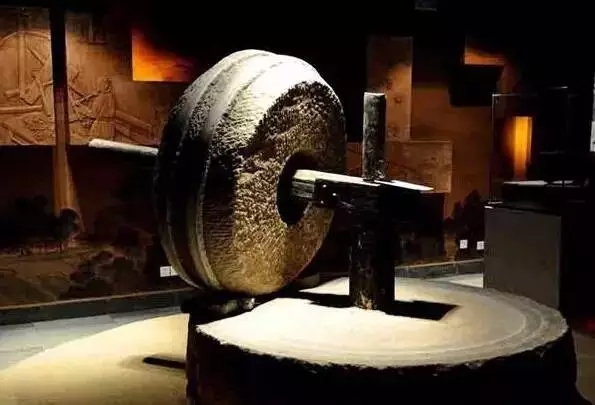The earliest stone mill in the world invented by Luban more than 2,000 years ago
The earliest stone mill in the world invented by Luban more than 2,000 years ago

|
What is the earliest stone mill in the world? Stone mill is a machine used to process grains such as rice, wheat, and beans into powder and slurry. Initially it was energized by human or animal power. Till the Jin Dynasty, the Chinese working people invented the water mill using water as a power source. Usually it was made of two cobblestones. Grinding unit is two flat stone layers. The joints of the two layers have texture. The grain enters the middle of the two layers from the upper hole, moves outward along the texture, and is ground when rolling across the two layers to form a powder. Let's take a look at the world's earliest stone mill and other related content
The earliest stone mill in the world Lu Ban is an excellent creative inventor in ancientChina. He lived at the end of the Spring and Autumn Period, called Gongshuban, because he was a native of Lu, so he was also called Luban. It is said that he invented saws, planes, and curved rulers for woodworking. He also used his wisdom to solve many problems in people's lives. In the days when Luban lived, people who wanted to eat rice noodles and wheat noodles all put the rice and wheat in a stone mortar and pounded them with coarse stone sticks. Using this method is very laborious, the mashed powder is coarse and fine, and it is seldom mashed at a time. Luban wanted to find a way to use less effort and achieve greater results. Two flat cylindrical stones with a certain thickness are used to make a grinding fan. A short vertical shaft is installed in the middle of the lower fan, which is made of iron, and there is a corresponding empty sleeve in the middle of the upper fan. After the two fans are combined, the lower fan is fixed and the upper fan can rotate around the shaft. On the opposite side of the two leaves, there is an empty cavity called a grinder. The upper fan has grinding eyes. When grinding the noodles, the grain flows into the grinding chamber through the grinding eyes and is evenly distributed around it. It is ground into powder and flows from the gap to the grinding plate. The flour is obtained by passing through a sieve to remove the bran. Many rural areas are still using stone to grind their noodles.
The history of the mill Mill, originally called Wei (wei), was called Mo in the Han Dynasty. The development of stone mills inChinais divided into three periods: early stage, middle stage and late stage. From the Warring States Period to the Western Han Dynasty as the early period, the grinding teeth of this period were dominated by depressions. The shapes of the pits were rectangle, circle, triangle, jujube core, etc., and the shapes were various and extremely irregular; the Eastern Han Dynasty to the Three Kingdoms was the middle period. This period It is a period of diversified development of grinding teeth. The shape of grinding teeth is radial, divided and oblique. There are four, six, and eight areas; the late period is from the Western Jin Dynasty to the Sui and Tang Dynasties (now). This period is the mature stage of stone grinding development. , The mainstream of grinding teeth is eight-zone oblique line, and there are also ten-zone oblique line. Grinding is driven by human, animal, and hydraulic power. The use of water power as a power mill was invented around the Jin Dynasty. The power part of the water mill is a horizontal water wheel. The upper fan of the mill is installed on the vertical shaft of the wheel. The water impulses the water wheel to drive the mill to rotate. This type of mill is suitable for installation where the water impulse power is relatively large. If the impulse power of water is relatively small, but the water volume is relatively large, another form of water mill can be installed: the power machine is a vertical wheel, and a gear is installed on the axle to connect with a gear mounted flat on the lower part of the grinding shaft. The rotation of the water wheel rotates the mill through gears. These two types of water mills have relatively simple structures and are widely used.
When it came to the 1970s, people cleverly combined ancient technology and modern elements to create stone mills driven by electric motors, including two styles of stone mills, chip mills and roller mills. . The grinding part of the chip stone mill is divided into two parts: fixed and rotating, forming a horizontal structure. The fixed part is a one-half cylindrical groove that matches the rotating part on one long side of a rectangular stone. The rotating part is made of It is formed into a cylinder with a hole drilled in the middle to penetrate the transmission shaft. The surface of the contact area between the semicircular stone groove and the rotating cylinder is carved with patterns similar to ancient stone mills, and the corresponding shielding transmission parts form a combination of ancient and new; roller stone mills The grinding part is a roller-like cylindrical rock, shaped like a steel grinding roller, and the surface is engraved with patterns similar to ancient stone grinding.
|